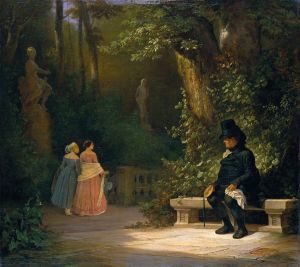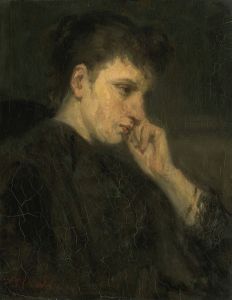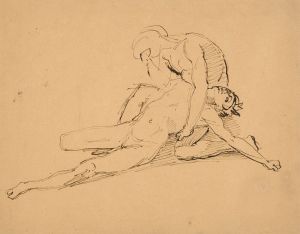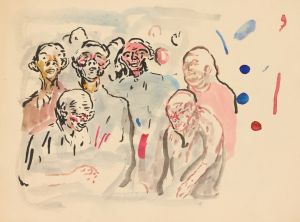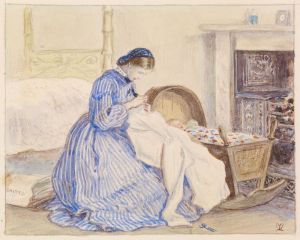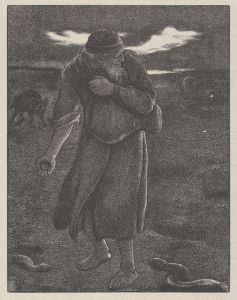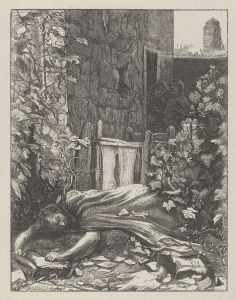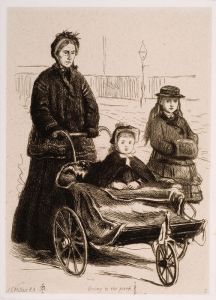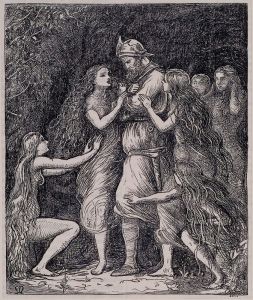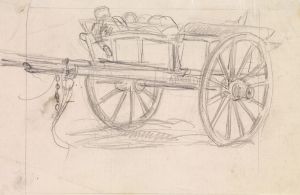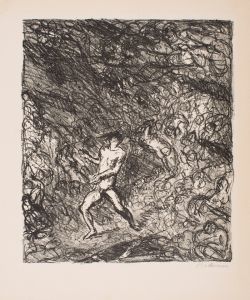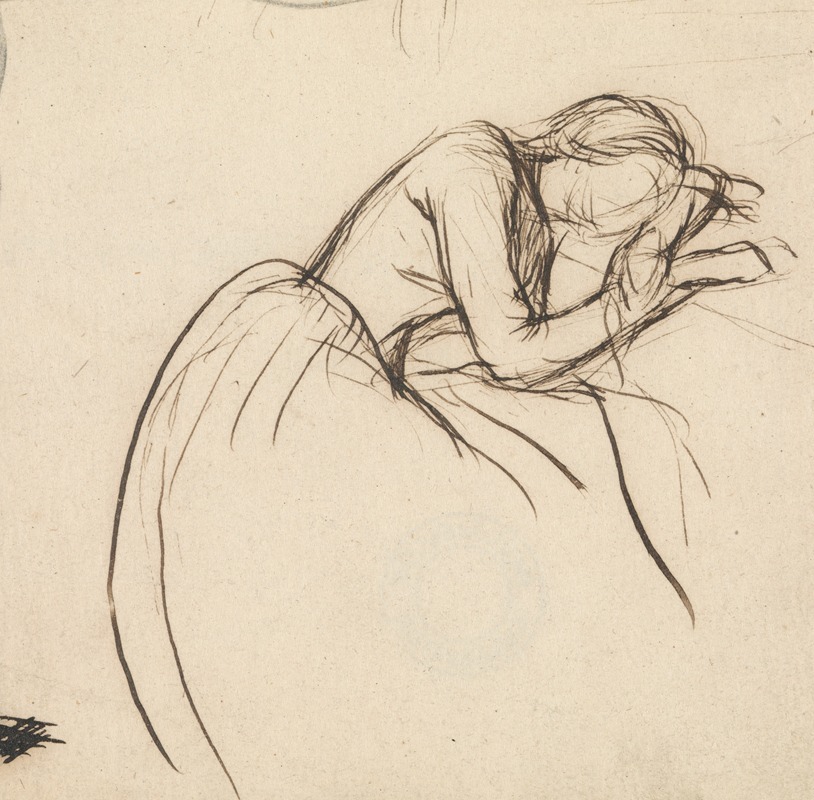
A Woman Bowed in Grief
A hand-painted replica of Sir John Everett Millais’s masterpiece A Woman Bowed in Grief, meticulously crafted by professional artists to capture the true essence of the original. Each piece is created with museum-quality canvas and rare mineral pigments, carefully painted by experienced artists with delicate brushstrokes and rich, layered colors to perfectly recreate the texture of the original artwork. Unlike machine-printed reproductions, this hand-painted version brings the painting to life, infused with the artist’s emotions and skill in every stroke. Whether for personal collection or home decoration, it instantly elevates the artistic atmosphere of any space.
"A Woman Bowed in Grief" is a painting by Sir John Everett Millais, a prominent English painter and one of the founding members of the Pre-Raphaelite Brotherhood. The Pre-Raphaelite Brotherhood was established in 1848 with the aim of reforming art by rejecting what they considered the mechanistic approach first adopted by Mannerist artists who succeeded Raphael and Michelangelo.
John Everett Millais was born in Southampton, England, in 1829 and showed remarkable artistic talent from a young age. He entered the Royal Academy of Art at the age of 11, making him one of the youngest students ever admitted. Millais' early works were characterized by their attention to detail, vibrant colors, and complex compositions, which were hallmarks of the Pre-Raphaelite style.
"A Woman Bowed in Grief" is a poignant representation of sorrow and loss. The painting depicts a woman in a state of deep mourning, her body language and facial expression conveying a profound sense of grief. The use of light and shadow in the painting enhances the emotional intensity of the scene, drawing the viewer's attention to the woman's sorrowful demeanor.
Millais was known for his ability to capture human emotion with great sensitivity and realism, and "A Woman Bowed in Grief" is a testament to this skill. The painting reflects the Pre-Raphaelite Brotherhood's commitment to depicting genuine human experiences and emotions, often drawing inspiration from literature, history, and contemporary life.
The exact date of the painting's creation is not specified, but it is consistent with Millais' style and thematic focus during the mid to late 19th century. During this period, Millais produced several works that explored themes of love, loss, and human suffering, often with a strong narrative element.
Millais' work was highly influential in the art world, and he received numerous accolades throughout his career. In 1853, he was elected as an associate member of the Royal Academy, and he became a full member in 1863. His contributions to art were recognized with a baronetcy in 1885, making him Sir John Everett Millais.
"A Woman Bowed in Grief" exemplifies Millais' mastery of technique and his ability to evoke deep emotional responses from viewers. The painting remains an important example of Pre-Raphaelite art and continues to be appreciated for its emotional depth and technical excellence.
Millais' legacy endures through his extensive body of work, which includes not only paintings but also illustrations and portraits. His influence can be seen in the works of subsequent generations of artists who were inspired by his dedication to realism and emotional expression.
In summary, "A Woman Bowed in Grief" by Sir John Everett Millais is a powerful depiction of sorrow that showcases the artist's exceptional talent for capturing human emotion. The painting is a significant piece within the context of the Pre-Raphaelite movement and continues to be celebrated for its artistic and emotional impact.





